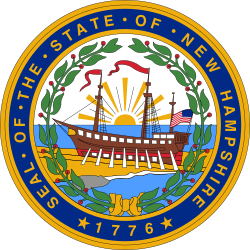| |||||||||||||||||
| |||||||||||||||||
 County results Metcalf: 40–50% 50–60% Wells: 40–50% 50–60% | |||||||||||||||||
| |||||||||||||||||
| Elections in New Hampshire |
|---|
 |
The 1856 New Hampshire gubernatorial election was held on March 11, 1856, in order to elect the governor of New Hampshire. Incumbent Know Nothing governor Ralph Metcalf won re-election against Democratic nominee and former United States senator from New Hampshire John S. Wells and Whig nominee and former member of the New Hampshire House of Representatives Ichabod Goodwin.Since no candidate received a majority in the popular vote, Metcalf was elected by the New Hampshire General Court per the state constitution. [1]

